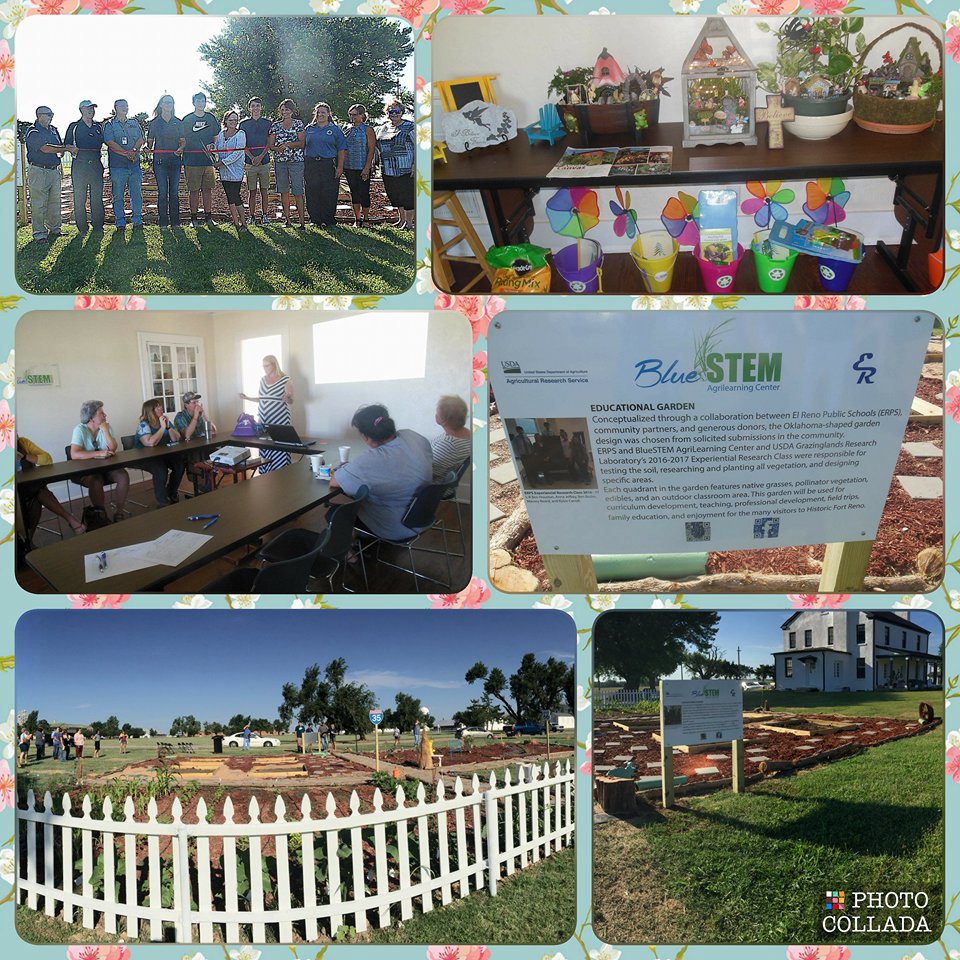The Problem
Our project began in a brainstorming session on how we could incorporate environmental science, ecology, vermiculture, composting, landscape beautification, and gardening into a free educational space for our community to learn and enjoy. Our wish is to fully develop all four quadrants plus the panhandle of our outdoor plot of land into teaching and learning stations for families, school groups, civic groups, and visitors. Our space is in the shape of our great state, Oklahoma, which makes it unique in its structure. In the southwest quadrant we would like to have a pollinator garden and raise bees and butterflies. We look forward to having native grasses planted with signs describing how the grasses are beneficial to the landscape of our region. In the northeast quadrant we have planted vegetables, and hope to be able to harvest enough produce to help supply fresh vegetables to the kitchens in our local school. Our plans for the northwest quadrant are to find natural seating to create an outdoor classroom. We would like to take an old door and paint it with chalkboard paint to use for teaching and learning. We are undecided on the use of the panhandle of our garden plot. However, we are continuing to brainstorm how we can use that little strip of land! Our ultimate wish is for our garden/outdoor classroom to become the favorite stopover for families and visitors to our area to see how we have taken a blank canvas and created a sustainable outdoor masterpiece!
Our Plan
We started with a dream. Then we asked for community ideas. And now we are mid-dream! A local alternative education program has a horticulture and landscaping program, and they helped design the space and gave us ideas for plantings. The idea turned into reality when we marked off the space using t-posts, multi-colored yarn, and a measuring tape. We had help from a co-worker with a backhoe to pull up the sod in the southwest, southeast, and northeast quadrants. A farmer had some nutrient rich soil he brought for those areas. We ask for donations of seeds of any kind to plant in our space, and we received a plethora of vegetable seeds, cover crops, bedding plants, and vegetation to plant. We started planting in the northeast where the vegetables would grow because we knew those seeds would need time for germination. While we waited to see little green sprouts emerge, we used some of the bedding plants and vegetation to plant around our building. We also researched pollinator plants, bees, butterflies, and birds so we could learn what would be best to plant in the southwest quadrant. It was late in the spring so we decided to wait until the fall to actually plant the correct plants. We want to plant our native grasses in raised beds with some walkways around the beds. Our research is taking a little longer than we originally planned, so we have only built the frame for the raised beds, but haven\\\\\\\'t planted anything yet. We have constructed this space with mostly donated items: cedar logs cut down on land that was being developed for new housing serves as our border; pea gravel scooped up from an elementary school\\\\\\\'s playground when the school was getting a different type of ground cover; tree stumps for chairs; bird feeders from community friends; outdoor furniture from a local women who was moving; and, a headboard from a twin bed that was on the curb to be taken to the city landfill (we are using the headboard as a trellis for some ivy plants). The landscape and horticulture program instructor gave us a few red wigglers (worms) to start our vermiculture project. We have grown a lot of worms, and have made a vermiculture habitat as part of our overall project. Next to the vermiculture tube is our composting area where we take our fruits, vegetables, and coffee grounds every day. Even our friends in a neighboring business have been bringing their food waste for our compost pile. Inside our building we are recycling paper, metal, glass, cardboard, light bulbs, and batteries. Our dream is becoming a reality only because we have students, parents, colleagues, and other community people helping. The picket fence along the east border of our garden was painted by some college students in the summer. We\\\\\\\'ve already harvested some tomatoes, okra, kale, cucumbers, watermelon, and melons. Our production is large enough yet to share with the schools, but we don\\\\\\\'t let the produce go away - we fix snacks and lunch!


